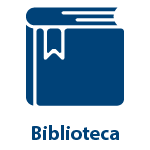Estimation of orbital elements and ephemeris using the geocentric Laplace method
On this website you will find the supplementary material of the paper: «Estimation of orbital elements and ephemerides using the geocentric Laplace method»
Title: Estimation of orbital elements and ephemerides using the geocentric Laplace method.
Abstract: Due to technological advancement in acquisition of small bodies images of the Solar System, it is possible to obtain a large number of astrometric information in a short period of time. In order to use all available astrometric information contained in a very short arc observation, it is necessary reconsidering the classical methods of initial orbit determination (IOD), this is because they are not designed for such sceneries. In this paper we present a IOD methodology based in geocentric Laplace method in a modern version. We calculated the orbital elements for the Near-Earth asteroids (1864) Daedalus, 2003 GW, 2019 JA8; the asteroid type Hungaria (4690) Strasbourg and the Main Belt asteroids (1738) Oosterhoff, (2717) Tellervo, (1568) Aisleen and (2235) Vittore. We use observations from Minor Planet Center (MPC) database as input data among which are data registered by the Astronomical Observatory of the Technological University of Pereira (OAUTP, Code MPC W63). This observations cover arcs of observation less than 22 days. We established the orbital errors in terms of shape and orientation for the asteroids orbits estimated. In general, the shape error was less than$53 x 10^-3 AU except for the asteroid 2019 JA8. On the other hand, the orientation erros were, in general, less than 0.1 rad aproximadaly except for (4690) Strasbourg. In addition, we estimated ephemerides up two month for all asteroids. When compared with actual ephemerides, the errors found allowed us to conclude that all these objects were recoverable in a field of vision of 95′ x 72′ (OAUTP field). This shows that Laplace method, though simple , can still useful in the IOD study, especially for observatories that starts with minor bodies observation program..
Animations:














